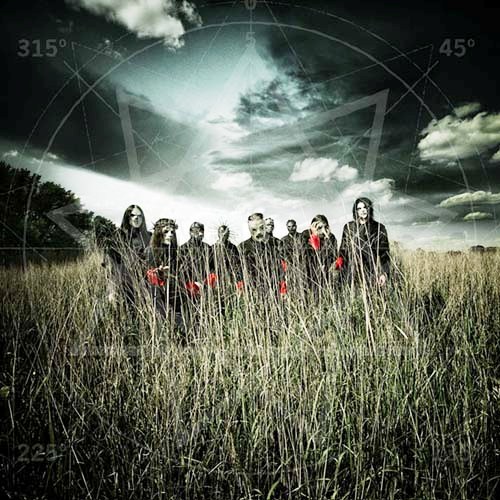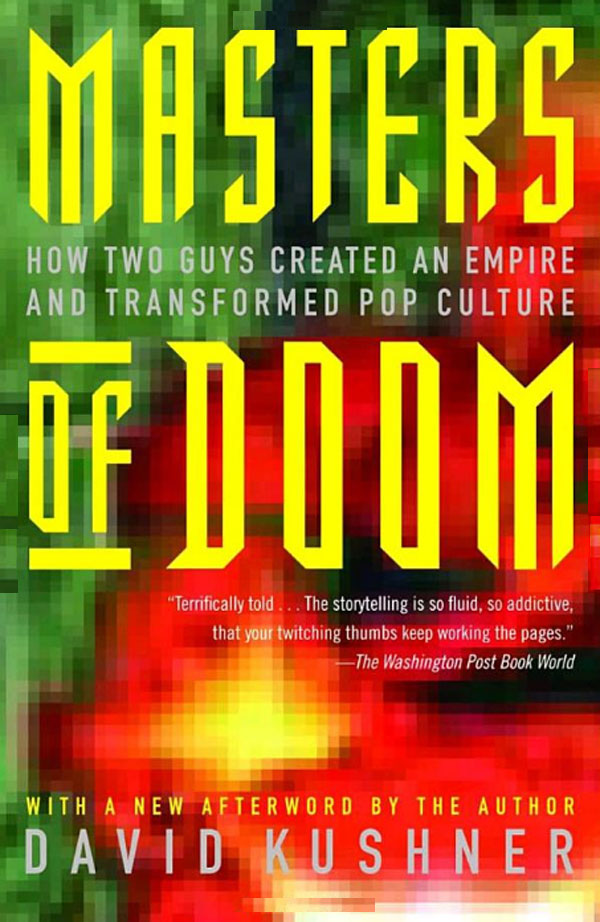 There’s lots of bad music these days. I don’t mind that, but what bothers me is the lack of interesting bad music.
There’s lots of bad music these days. I don’t mind that, but what bothers me is the lack of interesting bad music.
Where’s 2013’s answer to such moments as 2:34 in Korn’s biggest hit? Where’s Faith no More and Mike Patton when you need them? Where are the modern rejoinders to “CRAAAAWWWLIING IN MY SKIIIIN” and “LET THE BODIES HIT THE FLOOOOOR” and other inspired fits of stupidity for when you’ve got too many brain cells? Why does all modern bad music feel equivalent entertainment-wise to staring at a wall?
The first two Slipknot albums were ass and I will hate them forever, but they were memorable. The third was half shitty songs and half songs that I unironically enjoy. This album showcases a new style for the band…or a lack of one. Slipknot has no identity of their own any more. They sound indistinguishable from Chimaira, Lamb of God, and Machine Head. All Hope is Gone is like an album created by a committee.
Opening song “Gematria” writes a big quod erat demonstrandum on this hypothesis. The band doesn’t just use cliches, these use every cliche: It has Machine Head aggro-groove, FFDP-esque tough guy vocals, ultrahardcore breakdowns, and obviously the song itself goes nowhere. You can hear the band asking themselves “well, rapping on metal records isn’t cool anymore so…uh…this is what kids today like, I guess? No? Well about this?”
“Psychosocial” is a more cohesive song with an annoying chorus. “Sulfur” and “Butcher’s Hook” are filler hovering at the outer edge of listenable. “Vendetta” has stupid verses and a stupid chorus and a stupid middle section, there is not a single second of this song that I like.
We get an extra-heavy dose of Slipknot’s softer side this time around. “Dead Memories” is probably the best of the bunch, sounding like Alice in Chains. Then in descending order of quality is “Snuff”, “Child of Burning Time”, “Wherein Lies Continue”, and the worst song on the album, “Gehenna”, which sounds like Kid Rock trying to make a Mr Bungle song or something.
“This Cold Black” is a good song. That is not sarcasm. Somehow things work this time. Every now and then the three neurons this band has between them connect in an interesting way and produce good music. You can’t read too much into it.
The band has barely any use for four of their nine members this time around. There’s not much custom percussion, turntable scratches, or sampling. They sound like just a regular five piece band playing regular five piece music. They traded out the funny lyrics they just to have about Corey Taylor’s shitty childhood and replaced them with lyrics about politics. “ America is a killing name, it doesn’t feel or discriminate…Start a war in another backyard, and we’ll destroy your house of cards“…when I want opinions on the Iraq war, I definitely go to a bunch of people wearing clown masks.
Slipknot used to be a bad band with an amusing side. Now they’re making music so weak and boring that, by the end of All Hope Is Gone, even it seems to be asking you to turn it off.
 The Greek figure Achilles and the Irish figure Cú Chulainn were fated to live a short life, filled with glory. So it is with the programmers in Masters of Doom. Nearly everyone in this book is younger than thirty, and few of them did much of note after thirty. John Carmack has left id, and doesn’t seem that fussed with FPS gaming anymore. John Romero bounces between working for game studios and trying to keep independent startups afloat. The world of gaming has passed them by, but that’s how it is for everyone. Technology is a turning wheel that leaves no spoke at the top for long.
The Greek figure Achilles and the Irish figure Cú Chulainn were fated to live a short life, filled with glory. So it is with the programmers in Masters of Doom. Nearly everyone in this book is younger than thirty, and few of them did much of note after thirty. John Carmack has left id, and doesn’t seem that fussed with FPS gaming anymore. John Romero bounces between working for game studios and trying to keep independent startups afloat. The world of gaming has passed them by, but that’s how it is for everyone. Technology is a turning wheel that leaves no spoke at the top for long.
But between 1990 and 1996, the studio called id Software revolutionalised PC gaming four times. First there was 1990’s Commander Keen, the definitive “shareware” game, and proof that PCs could handle smooth side-scrolling action games without exploding. Then there was Wolfenstein 3D, which let you fight Hitler in a crude pseudo-3D environment. Then there was 1993’s Doom, which was anything but crude: this was the first game where you didn’t need to extrapolate or use your imagination, all the gore and violence was right there on the screen in front of you. Finally there was 1996’s Quake, which had a fully 3D engine and a sophisticated multiplayer interface (which facilitated deathmatching and online clans and competitive gaming and all the rest).
This book documents their story. When I opened the book and cringed a bit at the fish-out-of-water critic blurbs (“After finishing the book, readers may come away feeling like they’ve just played a round of Doom themselves, as, squinting and light-headed, they attempt to re-enter the world.”), I had three hopes for Masters of Doom, 1) that it wouldn’t spend overly long telling us about Carmack and Romero’s childhoods, 2) that it wouldn’t get on a soapbox about school shootings, and 3) that it wouldn’t dumb anything down or misrepresent the games. All three hopes were met.
We learn about the formation of id Software, with Carmack as the technical wizard and Romero as the creative genius. We learn of the various legal and semi-legal maneuvers that got them a creative team, a payroll, and computers to work on. They come across as people so focused on their work that they didn’t have time to check whether they were compatible as friends and as people. Early in the book the Carmack/Romero team is compared to Metallica’s Hetfield/Ulrich, which is a striking comparison – those guys were a tight unit when the band was furiously gigging and recording, but they started fighting as soon as they became rich and famous. Except that’s not fair – id Software kinda were friends, at least at the beginning. We learn about a D&D game they played together.
Other developers get some spotlight, such as poor ignored Todd Hall, hardcore “gamer-grrl” Stevana Case, and an incongruous middle-aged Mormon called Sandy Petersen (who would later work on Ensemble Studio’s Age of Empires strategy games). I got to speak to Petersen on an online forum once, and I asked him why he never says much about his time with id Software. His answer was something like “Working with id was like being a hyena stripping a carcass – the job got done, but it was unpleasant. With Ensemble, I enjoyed the process as well as the result.”
The years rolled on and id Software kept laying cards on the table like a poker player with a nut hand. But infighting between Carmack and Romero took its toll, and Romero left to form a new company: Ion Storm. The sad tale of Ion Storm is also documented here, and I was expecting to skip through that part. Ion’s disastrous three years working on Daikatana is well known on the internet. But I was wrong, and learned a lot of new things, such as exactly how hostile the relationship between Ion and Eidos became after Romero blew through $44m of Eidos’s money and failed to produce a game. It makes me wonder whether Romero would ever have been successful without Carmack’s technological sorcery backing him up. Some people can only thrive in a symbiotic relationship.
For fans of Doom etc, this is a fascinating book. It shows how the games were made and how we got from there to here. Most of it seems reliable (or at least backed up by other sources I’ve read), and it’s readable and entertaining regardless of technical knowledge. It came out in 2003, but there seems to be very little in 2013 worth adding to it. Id Software had its day, and now the night comes.
 This book humbles you, and makes you realise how powerful stories can be. It’s about rabbits.
This book humbles you, and makes you realise how powerful stories can be. It’s about rabbits.
It’s been said that carnivores evolved binocular vision – both eyes pointing forward – because it’s better for hunting, while herbivores have eyes on the sides of their heads to maximise their field of vision (there are exceptions, pandas have binocular vision, for example). Combine sideways eyes with disproportionate ears and fast legs and you have a rabbit, a creature with a thousand enemies. To be a rabbit is to live in fear. Your very design is a statement of your vulnerability.
It must be stressful to be a rabbit. Constant danger. Constant alertness. Attacks might come from any quadrant and any direction – the sky, or the ground below. Your weapons are inadequate. Your only defence is vigilance. Fortunately, the fictional rabbits in this story have another defence: a precognitive runt called Fiver who one day has a vision of destruction falling on their warren.
Attempts to persuade the chief rabbit fail, and a handful of believers abandon the warren. What follows is an adventure in southern England, and then an attempt to start a new warren next to the aggressive and warlike Efrafans.
Adams makes us feel the terror and smallness of a rabbit’s existence. Human things like trains and bulldozers seem as monstrous as Greek titans. Cats seem as cruel to us as they do to the numerous small creatures in the story. There’s a scene where the heroes are helping some rabbits escape from a hutch and it feels like they’re storming Fort Knox. Reading Watership down is like watching an IMAX movie, every blade of grass magnified a hundred times on the screen.
The numerous scenes of lightness and comedy (such as the stories of the mythological rabbit El-ahrairah) are perfectly inserted into the story, and relieve the tension without breaking it. Characterisation is another strong point. Every real life rabbit has seemed boring indeed next to these ones. Nearly every real life human, too.
Some authors cheat and make their animals into humans (as in Pride of Baghdad). Other authors are conservative and leave their animals fully animal, which sounds laudable but is often boring in practice (I think Tarka the Otter was like that, but it’s been years since I’ve read it).
Richard Adams achieves a balance. The rabbits are anthropomorphalised enough so that we relate to them and understand their motives, but they are still animal enough to thrill the reader with their strangeness.
Despite their vulnerability, rabbits have proven to be astonishingly successful. A thousand enemies haven’t stopped them from devastating my country’s ecosystem. This book is equally successful, and far less harmful. It’s an amazing story that exalts the small, and makes holes dug in the ground seem like palaces.
 There’s lots of bad music these days. I don’t mind that, but what bothers me is the lack of interesting bad music.
There’s lots of bad music these days. I don’t mind that, but what bothers me is the lack of interesting bad music.

